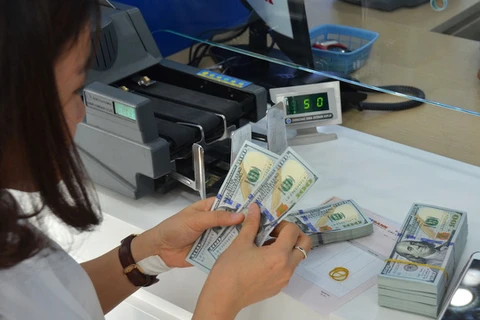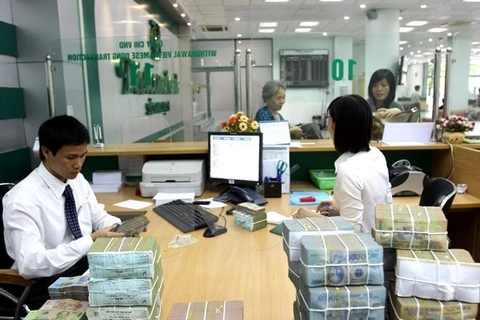Hanoi (VNS/VNA) - Commercial banks have consecutively lowered the value of the US dollar against the Vietnamese dong during the final days of 2018, helping the USD/VND exchange rate close the year under control.
The exchange rate at commercial banks dropped sharply over three days since December 26, pushing the rate below the threshold of 23,300 VND per dollar, the lowest level since September 21 this year.
On December 28 alone, banks depreciated the dollar against the VND by some 15-40 VND per USD.
The decline was notable especially when the central bank consecutively raised the daily reference USD/VND exchange rate. On the last working day of 2018, the State Bank of Vietnam (SBV) continued to adjust the rate upwards by 20 VND to 22,825 VND/USD. With the current trading band of /- 3 percent, commercial banks were allowed to sell the dollar at the cap of 23,509 VND and the floor rate of 22,141 VND on the day.
During the day, SBV’s transaction office also kept the buying and selling rates of dollars to commercial banks unchanged from the previous day at 22,700 VND and 23,439 VND per dollar, respectively.
According to data from the National Financial Supervisory Commission (NFSC), the VND was relatively stable against the dollar in 2018, with the central bank’s daily reference USD/VND exchange rate increased by about 1.5 percent compared to the beginning of the year while the rate listed at commercial bank increased by about 2.8 percent.
The commission attributed the slight increase of domestic exchange rate to international factor of the US dollar index rising about 5 percent against the beginning of the year and up 9 percent compared to the bottom in February 2018, as well as domestic inflation pressures.
However, the rise was slight thanks to positive support from the country’s balance of supply and demand of foreign currency, NFSC noted.
Reports from Bao Viet Securities (BVSC) also showed that the VND is among the currencies that have stiff resistance against the US Federal Reserve (Fed)’s lending rate increases, and Vietnam is the only country in Southeast Asia that has not taken its cue from the Fed.
According to the NFSC, the stable exchange rate has contributed to the country’s macroeconomic stability and inflation control, thereby strengthening the confidence of foreign investors in the Vietnamese economy.
NFSC also predicts that the pressure on the exchange rate will be reduced in 2019 as both domestic and international factors tend to be more favourable than in 2018.
Specifically, the US dollar will possibly not increase much or even weaken while domestic inflation will be controlled at about 4 percent since the global commodity prices do not increase much; and the pressure on the exchange rate will decrease.
Though believing the pressure on the VND in 2019 will not be as high as in 2018, BVSC analysts said prudence is needed and the central bank will likely maintain tight liquidity policy in 2019, with the dong injection into the market in 2019 to be not as much as in the first half of 2018.
The SBV protects the value of the VND by reducing liquidity of the banking system, and the bank will maintain its strict liquidity management to counter Fed’s lending rate gains in 2019, BVSC analysts said.-VNS/VNA
VNA

























